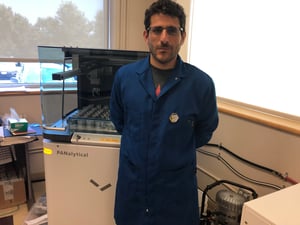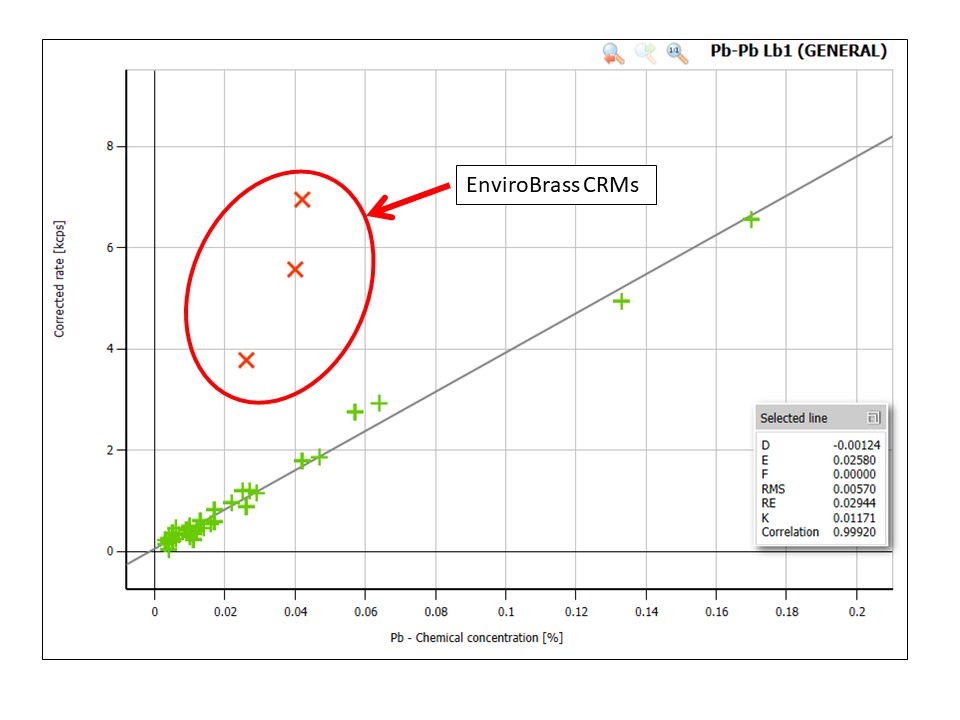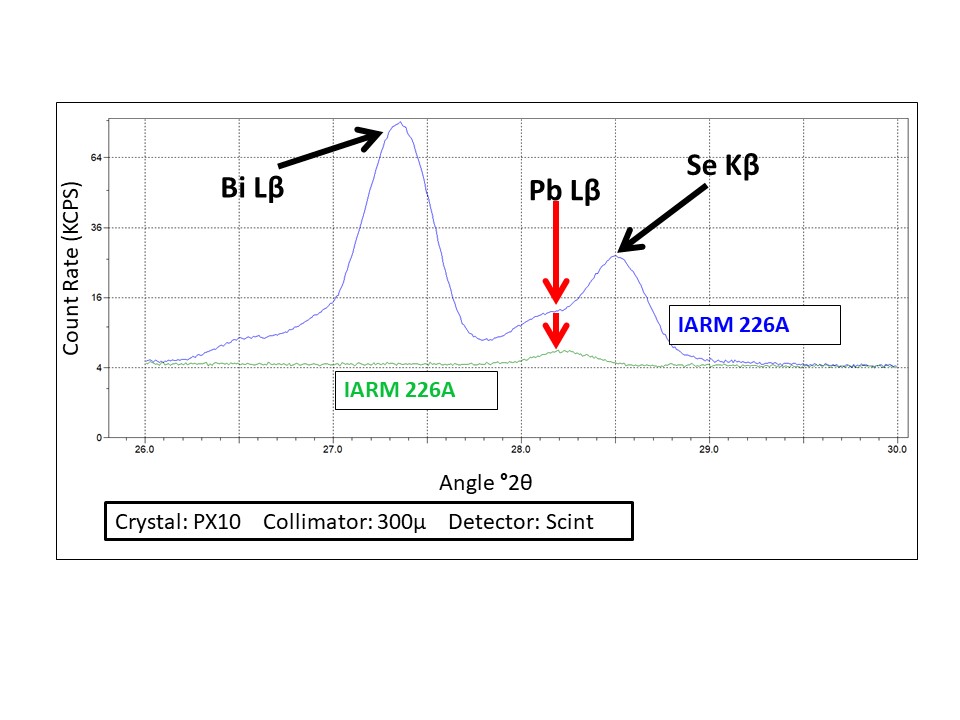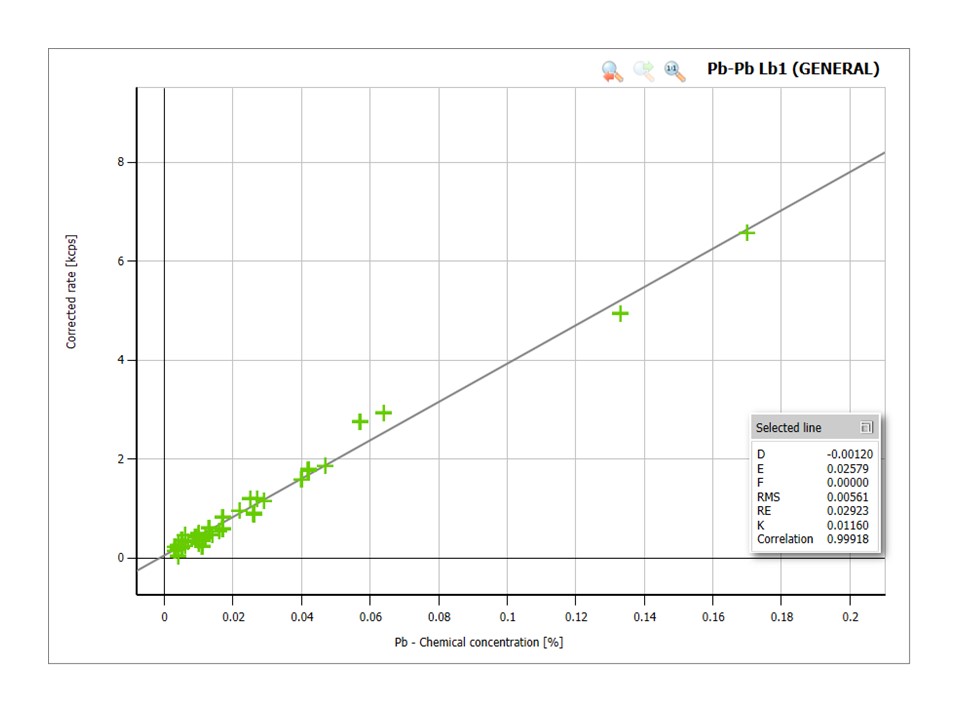Are you getting unexpectedly high lead values while analyzing Se-Bi-Cu alloys by WD-XRF?
Analyzing copper base alloys by WDXRF is usually straightforward, but when attempting to combine multiple matrices you can run into a few issues if you aren’t careful. In this post, I want to share a specific tip related to the analysis of lead in selenium and bismuth bearing copper base alloys.

When setting up a new application on our WD-XRF, one of the first things I do is set up wide-ranging calibrations across the entire range of each analyte’s concentration. Often times, calibrations need to be split into two or more ranges. While setting up our Cu alloy application, I knew going in that Pb is a particularly challenging element to analyze and can easily be further complicated by its tendency to smear during sample preparation (we finish all of our CRMs on a high speed lathe to avoid this complication--it can make a huge difference, trust me). Additionally, accurate analysis at low levels, particularly below 0.25 wt% is essential to ensure compliance with the 2011 Reduction of Lead in Drinking Water ACT (RLDWA).
After measuring all of my CRMs, and adding what I thought were the appropriate matrix and line overlap corrections, I noticed that the measured Pb-concentrations of three CRMs were about 4 times greater than expected (Fig 1). I began my usual trouble-shooting process:
- Is the sample surface clean? Yes.
- Did I analyze the correct standard? Yes.
- Am I using the correct line overlap corrections? Yes
- I’ve corrected for Sn and Bi, the two elements common in Cu alloys that have overlaps near the PbLβ line I was using. Time for another cup of coffee and some deep thinking….
The three CRMs in question were IARMs 226A, 227A , and 228A, all of which were EnviroBrasses conforming to UNS C98520. Time to check how these standards line up with the calibration for other elements. Sn and Bi, the two most likely offenders, since I was correcting for them in the Pb calibration, were perfect. Ni, Fe, and Zn measurements were fine too. The only other element, with an appreciable concentration was Se, and interestingly enough, these three are the only three standards I was using with non-trace levels of Se. I returned to the application setup to check for Se line overlaps, and sure enough, I found an overlap of the SeKβ line on the PbLβ line I was using (Figure 2). Since, most Cu/brass/bronze alloys contain trace Se and Pb up to 20 wt%, the SeKβ overlap is easily overlooked. Once I added a line overlap correction for Se on the PbLβ calibration, the measured Pb concentration in the three problematic standards dropped, and results were within one standard deviation of the certified values (Fig 3).

Fig 1- The PbLb calibration without a Se overlap correction. The three red X’s are the EnviroBrass CRMs that weren’t fitting the calibration.

Fig 2- Cu alloy analysis is always challenging because of the wide range of important alloying elements and the abundant line overlaps. If you know which overlaps are important, corrections can be easily made. However, while the Se on Pb overlap is clearly present, the typically trace levels of Se do not necessitate an overlap correction, unless you are using EnviroBrasses or other Se-Cu alloys.

Fig 3- After adding the Se overlap correction, the measured Pb concentration of the three EnviroBrass II CRMs are within one standard deviation of their certified values.
The troubling trio were all EnviroBrass or SeBiLOY CRMs. A brass alloy where a combination of Se and Bi are added as a replacement for Pb to create an environmentally-friendly and safe brass alloy with similar properties to leaded brasses. Despite having no added lead, some lead is typically still present and must not be greater than 0.25 wt% for compliance issues.
In addition to making ISO 17034 certified reference materials, ARMI MBH has an ISO 17025 analytical laboratory with a WD-XRF and ICP-OES, and is capable of making custom reference materials. We have lots of analytical experience with both XRF and ICP and are happy to share our knowledge. Follow the ARMI blog for more helpful posts like this, or feel free to contact us for help using ARMI MBH products in your analytical methods.

